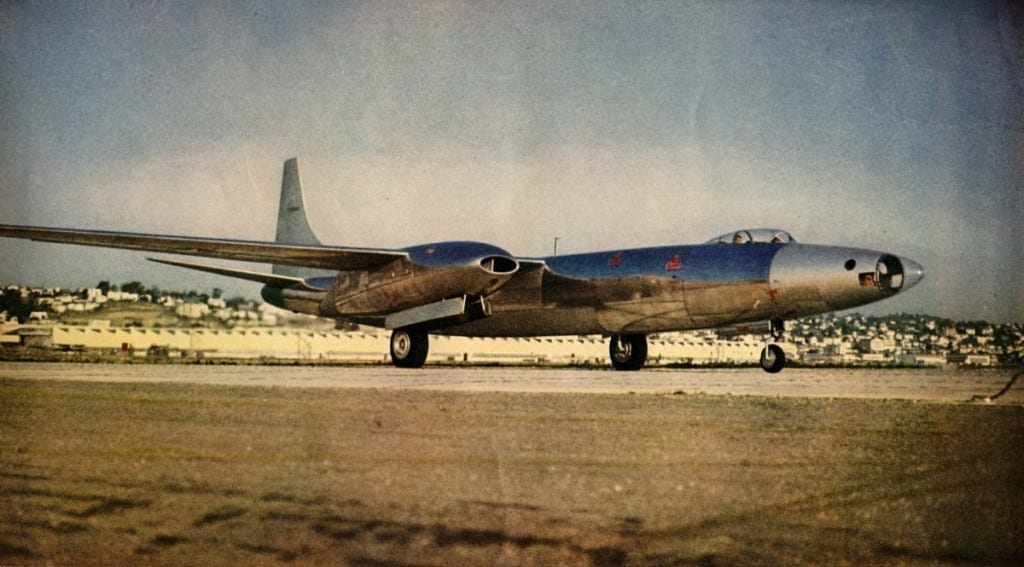I’d literally never heard of the Convair XB-46 Needle before finding it in Steve Pace’s The Big Book of X-Bombers and X-Fighters. The quad-jet bomber never advanced past the prototype stage and nothing survives of the sole example save one small part.
Which is a shame. Because as Pace writes—and clearly proves with some truly stunning photographs—the Needle was “one of the most elegant bombardment-type aircraft every built and flown.”
The XB-46 was a product of the U.S. Army Air Corps’ breakneck turbojet development in the late 1940s. In February 1945, the Air Corps, which two years later would become the Air Force, ordered three copies of Consolidated-Vultee Aircraft’s Model 109 medium bomber.
Just a year later, the Air Corps cancelled two of the planes but let Convair finish the single example.
Powered by four 3,800-pound General Electric J35 turbojets in two sleek nacelles, the 105-foot XB-46—48 tons fully loaded—was sadly under-powered. Flying up to 2,900 miles at a top speed of 545 miles per hour with a maximum 11-ton payload, the Needle “could not match the performance of its main rival, the Boeing XB-47 Stratojet,” Pace explains.
It’s worth noting that the XB-46’s wings were straight. The B-47’s were swept. And the latter bomber boasted six engines compared to the Needle’s four. The Air Force bought thousands of B-47s.
The Air Force half-heartedly tested the XB-46 between April 1947 and August 1949. The prototype survived a minor landing accident but did not survive the Air Force’s total lack of romance in the early Cold War.
The Needle sat idle for a few years and, in February 1952, the flying branch scrapped the plane, preserving only its nose cone, which now lives at the USAF Museum in Dayton, Ohio.
Read more:








I thought the B-10 kind of quaint.......
I've always favored the XB-35 for that title, myself.